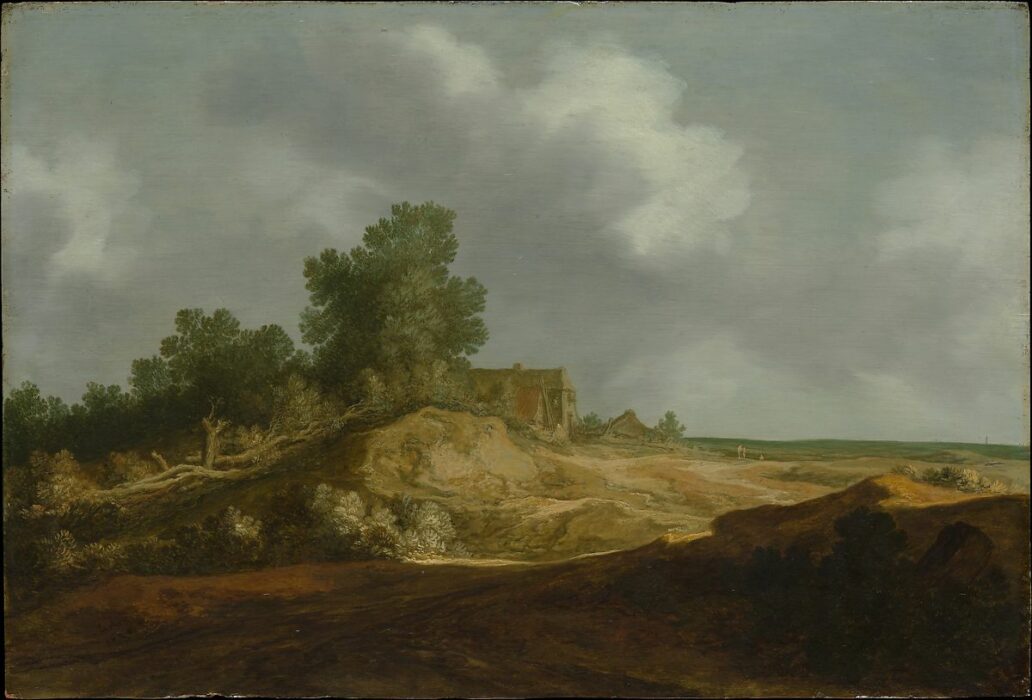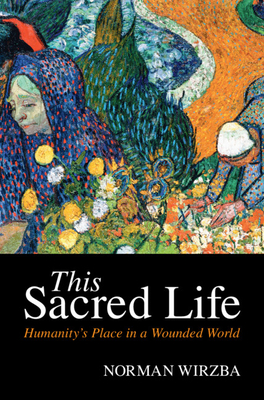A review of This Sacred Life: Humanity’s Place in a Wounded World
Hamilton, ON. In The Myths We Live By, the late Mary Midgley explores how we humans are deeply storied creatures. Myths—the grand narratives that give shape and meaning to our lives—tether us to each other, to time, to place. They tell us who we are, where we came from, how we might live and, possibly, why we are even here at all. One might think myths belong to that benighted classical world of pagan ritual or even that Dark Age of Christendom teeming with its irrational superstitions, but that’s only because, Midgley would argue, we’ve been held captive by another, more potent, set of stories.
For Midgley, the post-Enlightenment myths that orient us in the modern world are so potent because they base their authority, paradoxically, on the myth of mythlessness. That is, the Enlightenment project was, among other things, committed to overcoming the restrictive chains of religious dogma, inherited belief systems, and, yes, grand narratives of mythology. But this was only to change one set of answers to our biggest questions for a host of others. We can’t escape myths; we only exchange them. And some of the post-Enlightenment myths by which we continue to live tell a tale of humans as autonomous and atomized beings, of an inert world of knowable laws scrutinized by the detached and disinterested rational gaze, of an environment whose value is reduced to commodification and utility, and of a human species that is on some ineluctable frog-march of progress.
But myths are not just intellectual abstractions. They manifest in the real. The industrial—and arguably now digital—revolutions and the built world of mass manufacturing, global trade networks of shipping lanes and rail lines and interstate highways, and the ever-increasing consumption of fossil fuels and the mining of scarce and precious resources in whose name we will even wage international war are, in part, the physical embodiment of this deeply ingrained post-Enlightenment mythology. What we make reveals to us what we love and believe. And over centuries, these lived, incarnated mythologies shape our posture and stance to the world.
Yet as we well know, the modern, enlightened world with all its technological and economic accomplishments is hardly brimming with optimism. Rather, there is a deep-seated malaise, a growing uneasiness that all of our self-proclaimed autonomy, atomization, and engineering sophistication has not ushered in any longed-for utopia. World Wars, pandemics, chronic loneliness, and economic catastrophe racked the 20th century. And in the postwar years, the threat of nuclear annihilation hung heavy (and still does for those paying attention) over the heads of we fortunate enough to have survived the bloody gauntlet of the 1900s. As Max Horkheimer and Theodore Adorno noted, the enlightened world “radiates disaster triumphant.”
In the postwar years up until the present, an ongoing site of our uneasiness—our dis-ease—is the state of the natural world. Acid rain, hypoxic zones, soil erosion, deforestation, man-made flooding, unsustainable mining and farming practices, species depletion, harmful genetic modifications, and… the list goes on, all work to fragilize the Enlightenment myths of progress as the outworking of human ingenuity. This uneasiness has become so potent that even the growing consensus that this new ecological epoch be deemed the Anthropocene—the era of man—is met with growing dread. We are living in Bensalem, but we don’t look at it with the sanguine eyes of Francis Bacon. For many, the Anthropocene signals the beginning of our post-human future, which is to say the beginning of the end of us. Many are anxious at the possibility we can and will pull the entire rug of the world out from underneath ourselves, becoming the unwitting agents of our self-immolation.
What is one to do?
Perhaps one thing is that we can live by a better myth. Or perhaps recover such a story that’s been ignored and largely forgotten. This is what Norman Wirzba sets out to do in This Sacred Life: Humanity’s Place in a Wounded World. For Wirzba, a possible antidote for our dis-ease in the Anthropocene is to recover some of the essential pieces of the narrative, the lived mythology, of Christianity.
Now anyone familiar with the environmental movement will likely already have their hackles up. When it comes to destroying the natural world, Christianity is the problem, not the answer. In his well-known and oft-quoted 1967 essay, “The Historical Roots of Our Ecological Crisis,” Lynn White Jr. laid the blame for the ecological crisis squarely on the shoulders of a Westernized form of Christianity that had denigrated the world, demonized the body, and cultivated disciples who intellectually and practically had absconded from their obligations to and care for this world. But White’s ultimate challenge—often ignored—was that either Christianity had to be abandoned or it had to be re-imagined.
In the intervening decades, numerous advocates for the environment have written beautifully from various religious sensibilities, including those openly hostile to Christianity. But there is also a strong community of writers who draw on the resources of the Christian tradition to challenge bastardized forms of their faith that has often walked unquestioningly in lockstep with the colonizer, the slaveholder, the developer, and the economist. Wendell Berry is perhaps the most well-known (obviously for this readership) who has sought to articulate the ways in which Christianity as a truly lived out and practiced mythology makes possible the survival of creation. Ellen Davis’ Scripture, Culture, Agriculture is still perhaps the most convincing theological work on this end. And several years ago, Alan Jacobs even toyed around with writing a longer project on Anthropocene Theology, for which, alas, I am still waiting.
Or was. Until I read This Sacred Life and thought that, in some ways, Wirzba has provided the type of sustained theological and philosophical work for which Lynn White Jr. was asking. This really is a solid Christian manifesto for thinking seriously about the world and our unique place in it. Wirzba, as he has done throughout his academic career, helps readers across the spectrum of faiths in our pluralistic, secular age hear anew the music of Christianity as a faith intimately concerned with this given, material world. Whether you consider yourself a part of the Christian tradition or not, Wirzba’s argument that the ecological crisis we face in the Anthropocene is fundamentally a problem of our lived mythology bears consideration.
Wirzba’s argument centers upon three central tenets of the Christian story: earth as creation, humans as creatures, and a divine summons to creativity. On the face of it, this might not seem to have much (if any) relevance to the crises we face in the Anthropocene. But if we make this less about abstract ideas and more about lived and a built mythology, Wirzba helps us see there could be a better way for us to dwell upon the earth if we first dwell within this story.
Wirzba argues that in the Anthropocene, human dwelling is primarily from a posture of detachment or, as it is phrased in the book, a “great disembedding.”
Those more philosophically inclined might trace such detachment back to Descartes’s meditations and the isolated thinking self he imagined. His thought experiment became foundational for many Enlightenment myths that followed, to be sure. But Wirzba invites us to think more viscerally about things like air conditioning, steam engines, or our smart phones to perceive the multiple ways in which our built world functions to disconnect and detach us from experiencing weather patterns, sunlight, darkness, human contact, and so much more of the actual physical world. Part of the Anthropocene’s effect is to create spaces in which we—particularly the most affluent—live without having to confront the natural and by extension, the most dire consequences of consumptive lifestyles. The success of the Anthropocene is due, in part, to designed blindness:
The paths that have led us to an Anthropocene epoch result from a refusal of creatureliness… One way to characterize [this refusal] is to observe how the expansion of human power has historically most often gone collectively with a diminishment of respect for the creatures and places one has power over, a diminishment that is deeply linked to the refusals to see where one is and who one is with.
Wirzba asks us to defamiliarize our daily practices and try to perceive all the ways in which the world is brought forth to us in ways that diminish its vitality, mystery, complexity, and potency: Food that comes shrink-wrapped under white lights, commerce with the effortless flick of a finger on a touch screen, human interaction with the frictionless power to engage another person when and wherever you want through a filtered screenshot. Everywhere we turn, we are buffered from the friction of a real encounter with the real.
Heading upstream of this problem, Wirzba asks what, if anything, would change if we were to recover a sense that we are creatures in a creation who are called to be creative? And more, what if these terms rid themselves of their post-Enlightenment hangover that has distorted how even well-meaning Christians have understood them?
In terms of creation, Wirzba challenges readers to confront the tacit Deism that still lingers when one thinks of a Creator’s relationship to the Creation. A robust doctrine of Creation distinguishes Christianity from much environmental discourse today, refusing any animism (the world is not God) or any strict materialism (the world we encounter is not all there is). Rather, understood as Creation, the world is the creative utterance, the language and song, of a powerful Creator who attends the earth in love. This means that the poetic account of God saying “Let there be…” in Genesis is not confined to a particular moment in some remote past. Rather, the song of Creation echoes into the present and is continually sung each moment anew as God lovingly upholds and sustains the Creation. Just look at your hands. The riot of atoms and the blood coursing through your veins are, in this narrative, only doing so because the “Let there be…” is still summoning all that is.
Recovering an understanding of the world as Creation does a few things to our perception in the Anthropocene. One of the most important of which is to simultaneously heighten and relieve the burden of responsibility we feel. It is heightened, because our response to this creative word is not simply one of intellectual assent, but of the very form of life we inhabit individually and collectively. We are invited, even called, to partake in the song of Creation by what we make and how we live. But we are also relieved of the burden because the goodness, the sacredness, of the world does not depend on us. The world is sacred before and after us because it exists first and foremost in relation to the Being who is singing it, enchanting it, every single moment with or without us. Because of this, Wirzba notes: “We witness the Sacred, we do not create it.”
Why does this even matter?
To speak of the sacred is to speak about a depth dimension that calls people into postures of gratitude that acknowledge the giftedness of life, and that inspires them to practices of care and nurture as the most fitting response to gifts having been received. To sense the sacred in another is to want to celebrate its life through a generous giving of gifts in return.
The Anthropocene has been several centuries (or more) in the making, and it will likely be several centuries (or more) in the unmaking. We can’t be naïve to the fact that even though we know better we very well might still usher in our own destruction. The Christian tradition is clear-eyed about this possibility, knowing that Hell is nothing less than humanity left to our own devices. However, the intensity of our collective malaise, uneasiness, and dis-ease is what just might shock us into new forms of life and open us to new stories and myths, even if they are simply older stories recovered.
Of course, simply reading Wirzba’s book can be another exercise in detached abstraction. It is a book after all! But perhaps it’s the nudge you need to reconsider your little actions and the grand narrative which guides and orients them. And, perhaps, you’ll go out to confront the real in all its strange mystery and strain to hear the music and the summons that invite you to re-embed yourself in the real, to feel awe at all that’s been given to you, and to consider living a life of creaturely gratitude and creativity.
Image Credit: Pieter de Molijn, “Landscape with a Cottage” (1629).







3 comments
Fred Boyle
…modus operandi of who? what?…please.
Jordan Smith
The obsession with the Enlightenment makes no sense to me. The problem is greed, plain and simple. Humans have been destroying their environments since they started inhabiting them. (See the wonderful Fall of Civilizations podcast) Yes, the Enlightenment preceded/cooncided with the Industrial Revolution so the damage was accelerated, but humans have always made bad faith arguments to justify greed. It’s the modus operandi of the Republican Party.
Martin
“the song of Creation echoes into the present and is continually sung each moment anew as God lovingly upholds and sustains the Creation”
Indeed, more than one scholar has suggested the 7 days of Creation were not a finite week but a cycle, rotating various themes/concerns continually into the future.
Comments are closed.